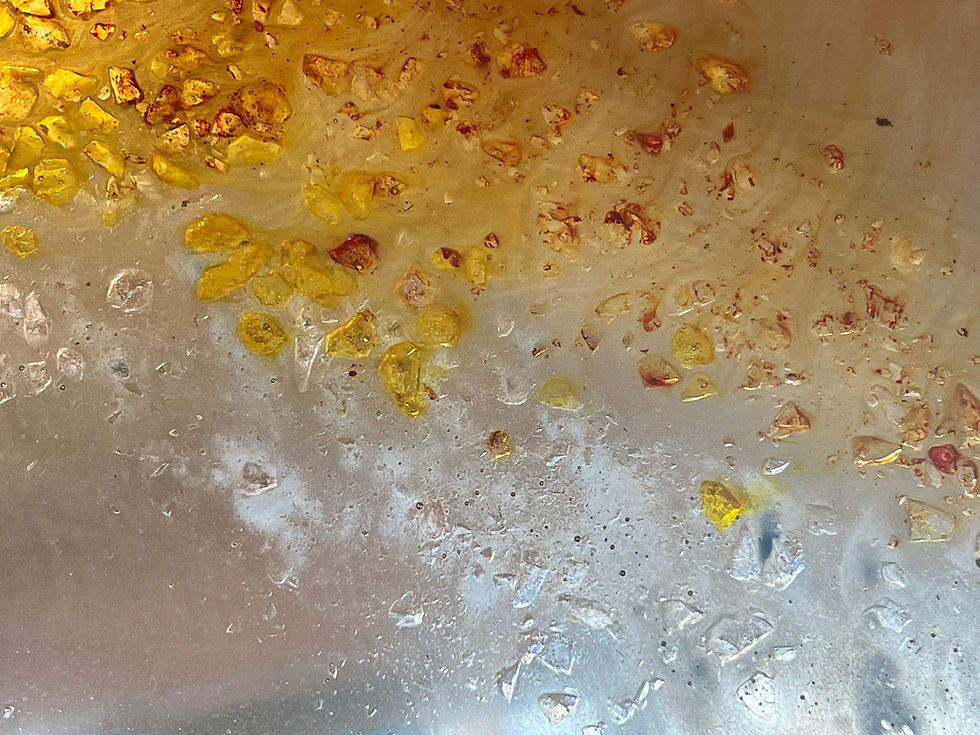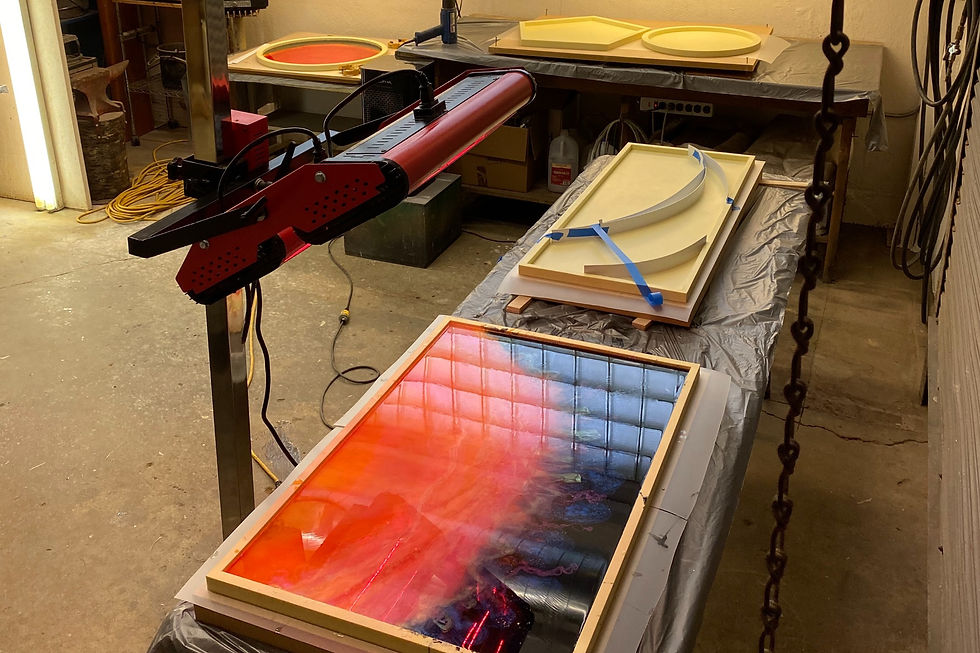From Bronze to Epoxy: Reinventing a Career in Color
- Eichinger Sculpture Studio

- Nov 11
- 2 min read
For decades, Martin Eichinger told stories in bronze—sculptures grounded in myth, movement, and emotion. His figures carried the weight of narrative and time. But after forty years of that precision and permanence, Eichinger wanted something else: unpredictability.
The answer came through epoxy resin, a material that refuses to sit still. It moves, cures, transforms, and grows on its own schedule, pulling the artist into collaboration with chemistry. Where bronze demanded mastery, epoxy demanded surrender.
Eichinger’s studio now feels as much like a lab as an atelier. Rows of mica powders, glass spheres, and dyes line his workspace—tools for experiments that can take hours to unfold. He’s created more than a hundred test pieces, studying how light and time shape the outcome. “The mica wants to layer itself,” he says. “It creates lines and patterns you can’t predict. You come back the next morning, and it’s changed completely.”
The unpredictability isn’t a flaw—it’s the point. Each piece becomes a record of transformation, a collaboration between intention and natural process. “Epoxy is magical in a lot of different ways,” he says. “It evolves. It changes as it cures.”
That constant evolution mirrors the subject that fuels this new direction: outer space. Eichinger has long followed the Hubble and James Webb Space Telescopes, drawn to how they capture time itself—light traveling billions of years before reaching our eyes. His epoxy work channels that same wonder.
His new pieces aren’t depictions of outer space so much as portals through it. The layered resin creates a sense of depth that lets the viewer look through the image instead of at it — as if seeing the universe from inside, rather than observing it from afar.
Technically, the work has evolved alongside the concept. Early on, Eichinger poured resin into rubber molds—the same method he used for bronze—but soon realized that flexibility and transparency couldn’t coexist that way. He began pouring directly onto framed acrylic panels instead, treating each one like a suspended canvas. The result is artwork that doesn’t sit on a wall so much as floats in space.
Epoxy also shifted his sense of time. A bronze piece might take months to cast and finish; resin reveals its character overnight. “Eight hours compared to bronze is really fast,” he says, laughing. But speed isn’t what excites him—it’s discovery. “When you put it in, you don’t know what it’s going to look like eight hours later.”
That element of surprise has rekindled his sense of play. After a lifetime mastering permanence, Eichinger is now working in impermanence—where the story isn’t just what’s made, but how it comes into being. “I still think of these as sculptures,” he says. “But they’re not sculptures in the same way.”
The shift from bronze to epoxy isn’t about abandoning one medium for another; it’s about perspective. The same hands that once shaped mythic figures are now shaping light. The same instinct for storytelling remains, only the language has changed.
“The bronze was a wonderful way for me to spend my career,” Eichinger says. “But this—this is something else.”
















Comments